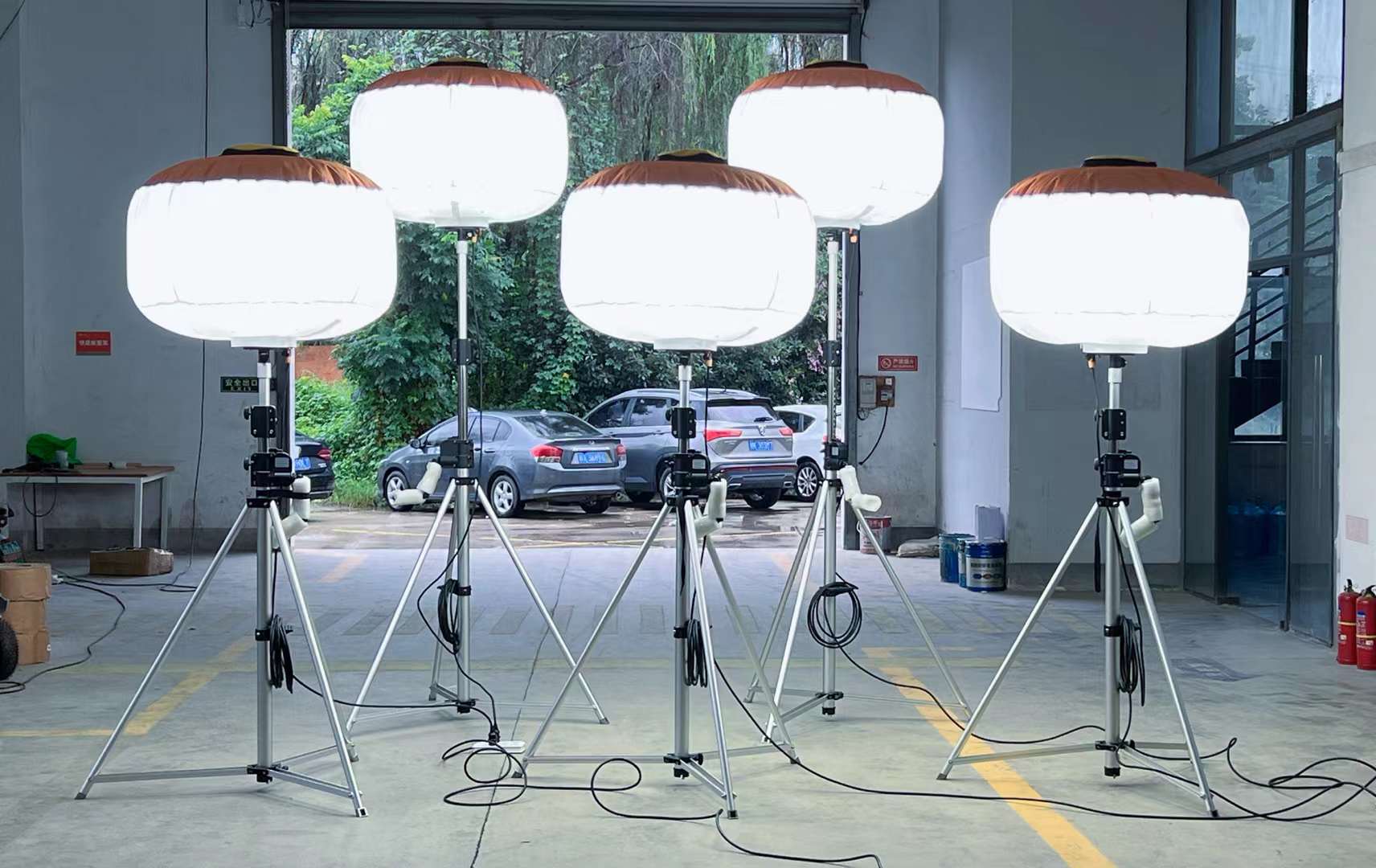Industrial lights used to be simple—on or off, bright or not. But now, thanks to smart technology, they're doing much more. IoT and AI are changing how lighting works across sites and industries.
IoT and AI are transforming industrial lighting1 by enabling remote control, predictive maintenance2, adaptive brightness3, and real-time monitoring—making systems safer, smarter, and more cost-effective.

I first noticed the shift when a construction manager showed me his phone and dimmed a balloon light with a tap. That was no ordinary setup. It was a smart tower connected to the cloud. The light adjusted based on daylight, weather, and worker location. It was an Airstar Sirocco with Bluetooth and DMX support. That moment showed me how far industrial lighting had come.
What Role Does IoT Play in Industrial Lighting?
IoT connects lighting devices to the internet, allowing data sharing and remote control. This means operators can monitor, schedule, and adjust lights from anywhere.
IoT allows balloon lights—like Airstar’s Sirocco and Moonlightia’s LED towers—to be controlled wirelessly for scheduling, diagnostics, and optimization across large sites.

In a recent road construction project, we installed IoT-connected balloon lights that could be grouped and programmed. The foreman used an app to dim lights when traffic was low and switch colors based on work zones. The whole system responded in real-time. It saved power and helped avoid miscommunication.
Key IoT features include:
| IoT Feature | What It Does | Benefit to Users |
|---|---|---|
| Remote On/Off | Turn lights on or off via app or dashboard | Save time, boost efficiency |
| Group Control | Manage multiple lights together | Easier coordination |
| Scheduling | Automate lights by time or condition | Saves energy |
| Live Diagnostics | Report bulb status, power use, or errors | Prevents failures |
Airstar’s higher-end models already include DMX and Bluetooth. Moonlightia adds mesh networking and mobile apps for LED balloon towers. That means you don’t need to touch the light. You just manage it remotely.
How Does AI Make Lighting Systems Smarter?
AI takes lighting beyond automation. It learns. It adapts. It makes decisions based on patterns and predictions.
AI in industrial balloon lighting adjusts brightness, predicts failures, and balances power use to keep systems safe and optimized.

We tested an AI lighting system on a large infrastructure site with 24/7 operations. The system tracked foot traffic and machinery movement. It lit only the areas in use. The rest dimmed or turned off. Over 30 days, we cut energy use by nearly 40%.
AI also predicts problems. If a light’s brightness drops or power draw changes, the system flags it. That helps replace parts before failure. Airstar’s pro models and Moonlightia’s newest towers use this kind of logic with built-in sensors.
| AI Function | Real-Life Use Case |
|---|---|
| Adaptive Brightness | Adjusts light output based on ambient light |
| Predictive Maintenance | Detects when LEDs or ballasts start degrading |
| Pattern Learning | Optimizes lighting schedules for task timing |
| Load Balancing | Distributes power across multiple units evenly |
These smart towers aren’t just passive gear anymore. They’re part of your safety and energy plan. AI lighting means fewer surprises and better working conditions.
Why Does This Matter for Sites Using Balloon Lighting?
Sites that run at night, move often, or operate off-grid need smart lighting more than anyone.
IoT and AI-enabled balloon lights improve site safety, reduce downtime, and help teams manage lights without constant manual work.

I worked with a team managing ten rotating night jobs. Before, they had to visit each light tower to adjust them. With smart LED balloon towers, they now manage the full setup from one tablet. They set different light zones based on hazard areas. They dim unused zones. They monitor everything—even battery levels.
This is where Moonlightia shines too. Our towers are made for these exact conditions. We design for real-time control, cloud-based updates, and mobile apps that work in the field. We’re learning from Airstar’s smart features and adding more advanced AI with every upgrade.
Whether you're lighting a concert, a flood zone, or a massive jobsite, smart lights reduce human error and increase safety.
Conclusion
IoT and AI are making balloon light towers smarter, safer, and easier to manage—turning them into essential tools for modern industrial and emergency work.
-
Explore how IoT and AI are revolutionizing industrial lighting, enhancing efficiency and safety across various sectors. ↩
-
Learn about predictive maintenance and how it helps prevent failures in industrial lighting systems, ensuring reliability and safety. ↩
-
Discover the benefits of adaptive brightness in lighting systems, optimizing energy use and improving visibility in various environments. ↩




